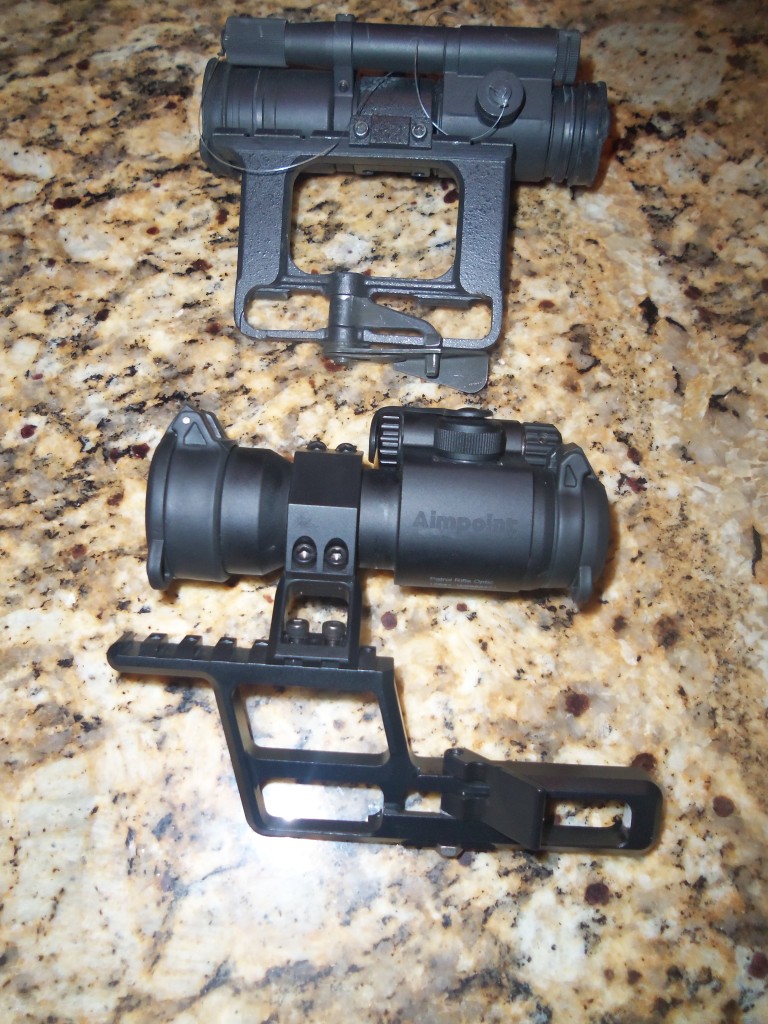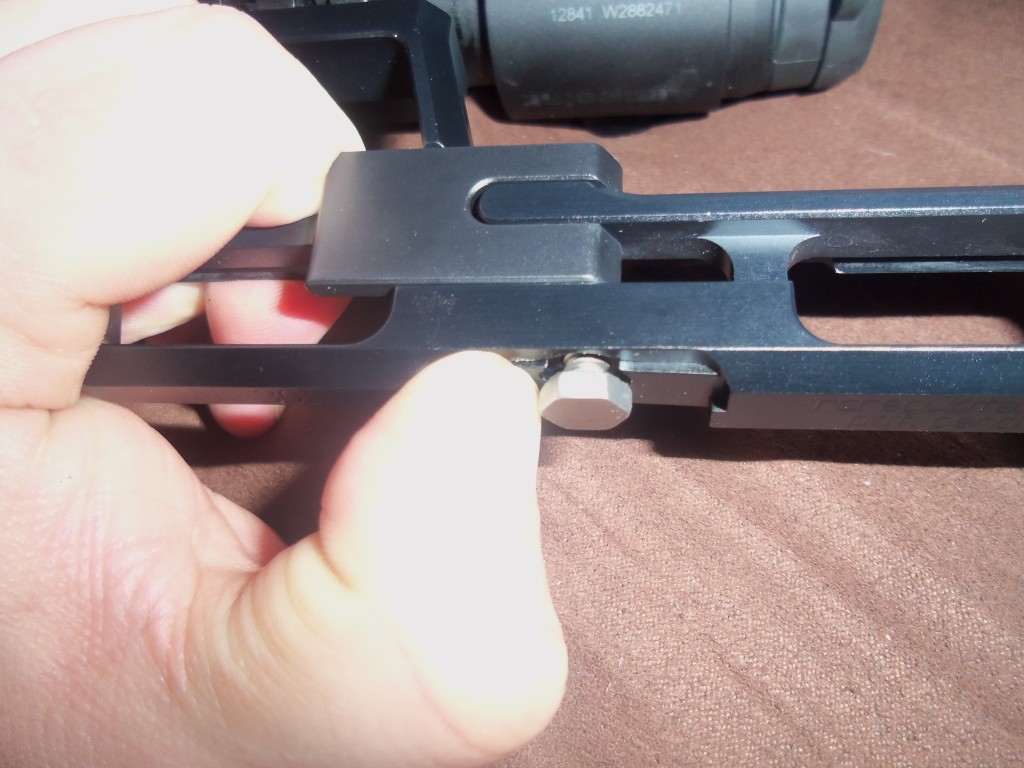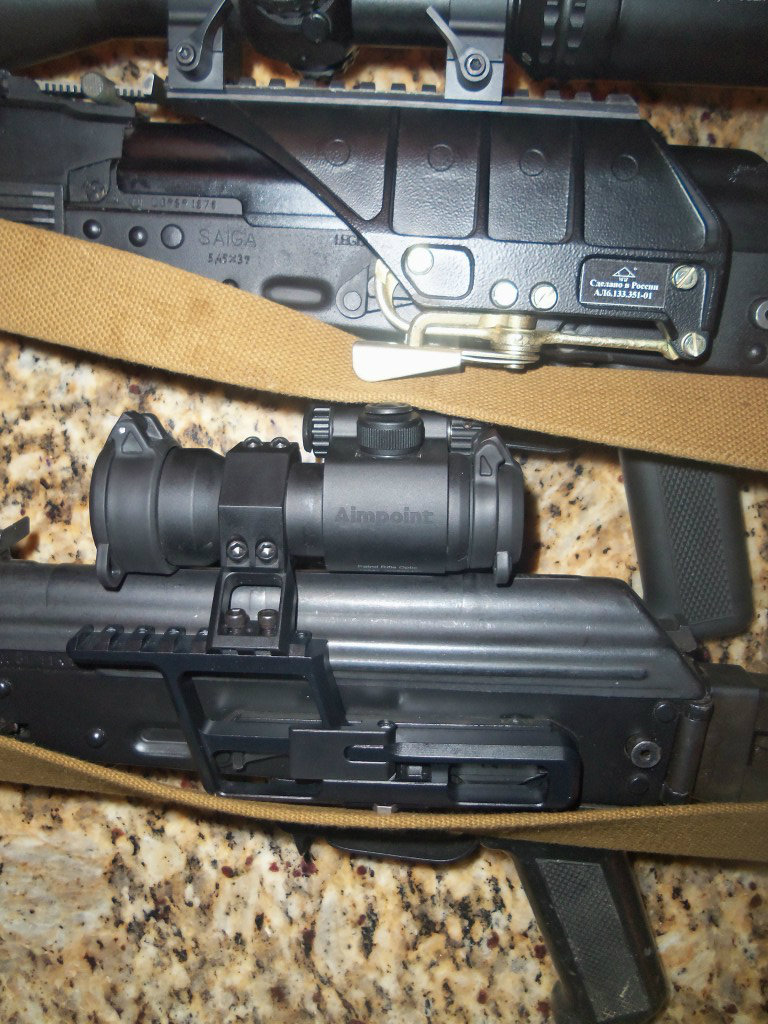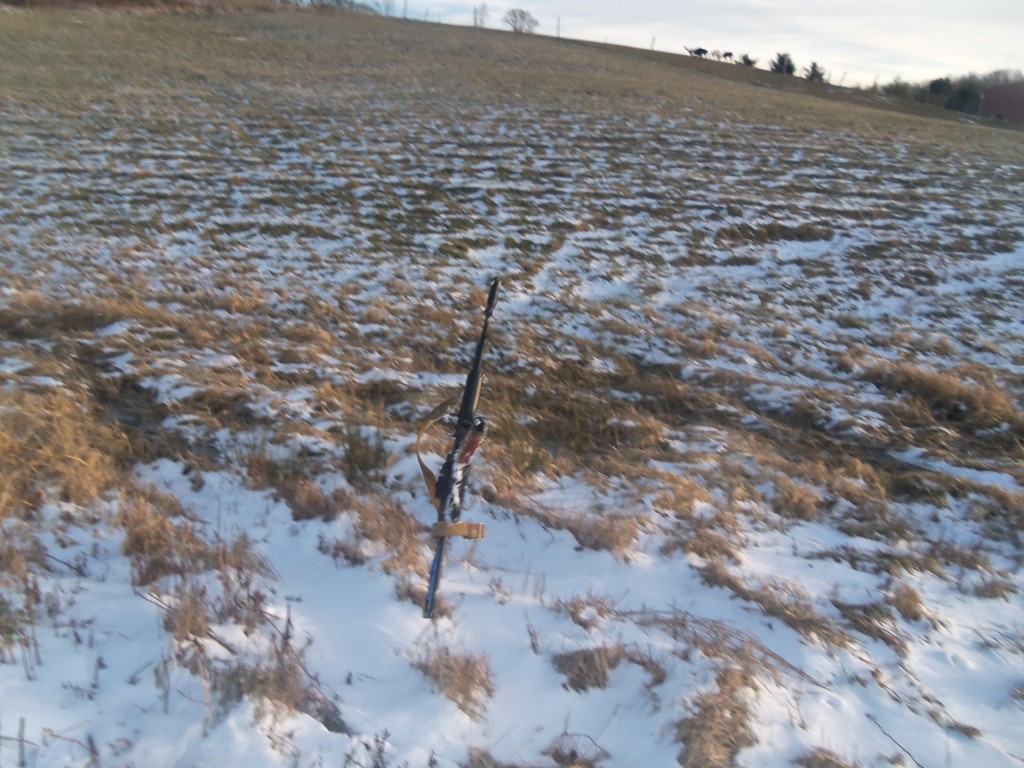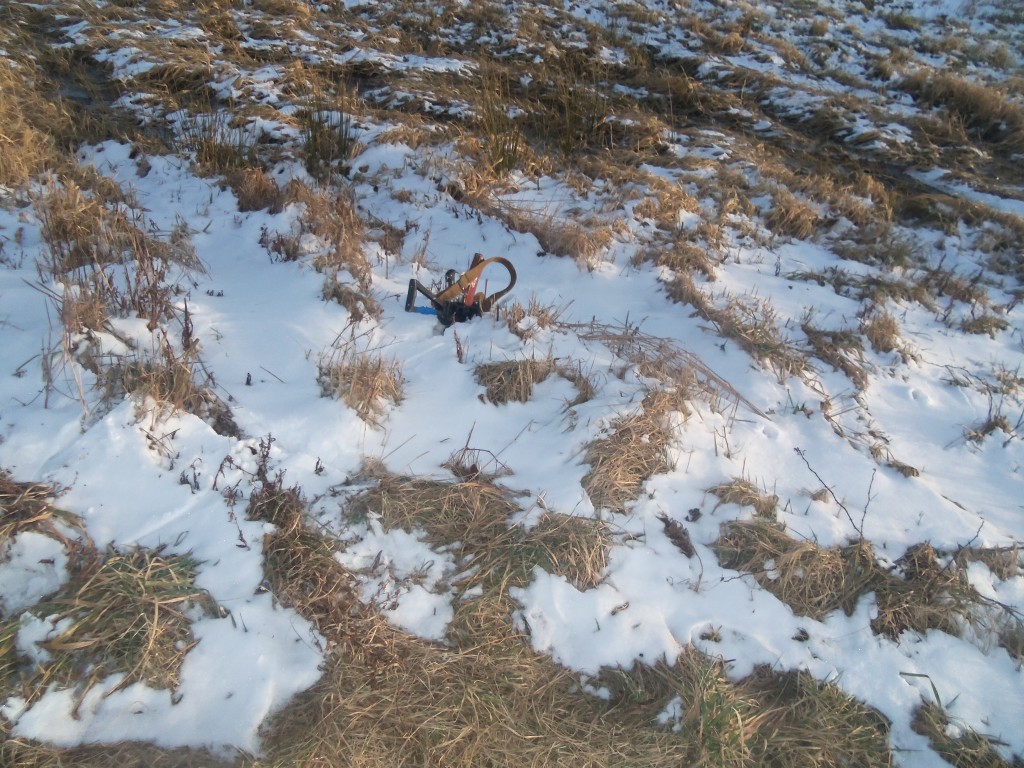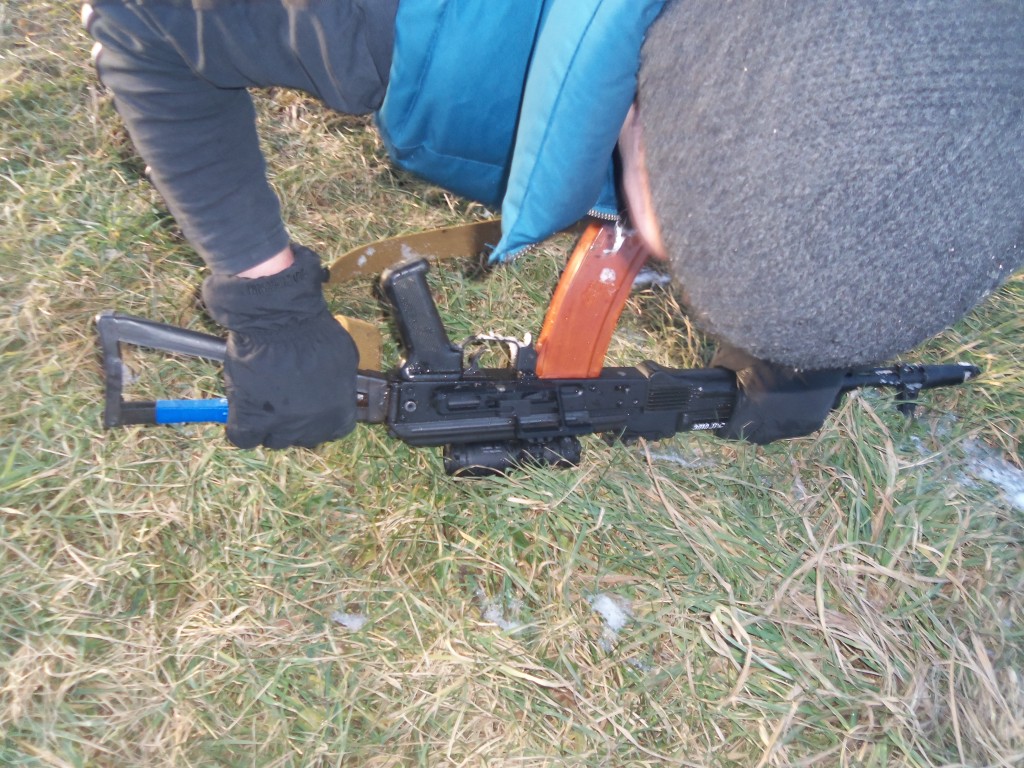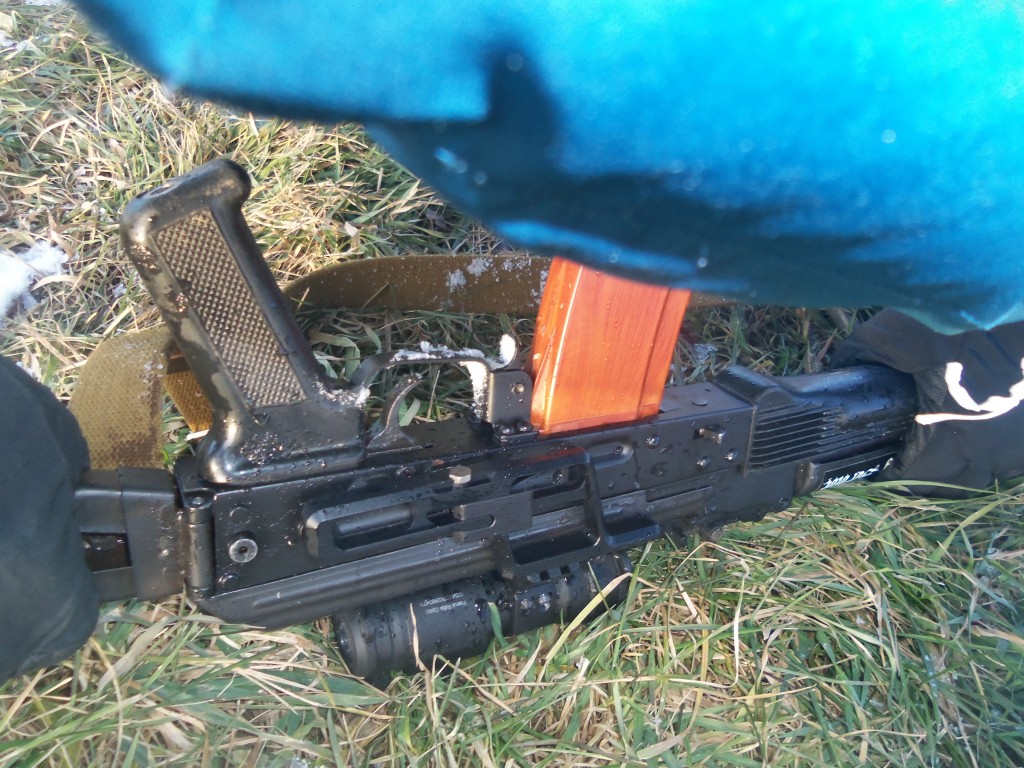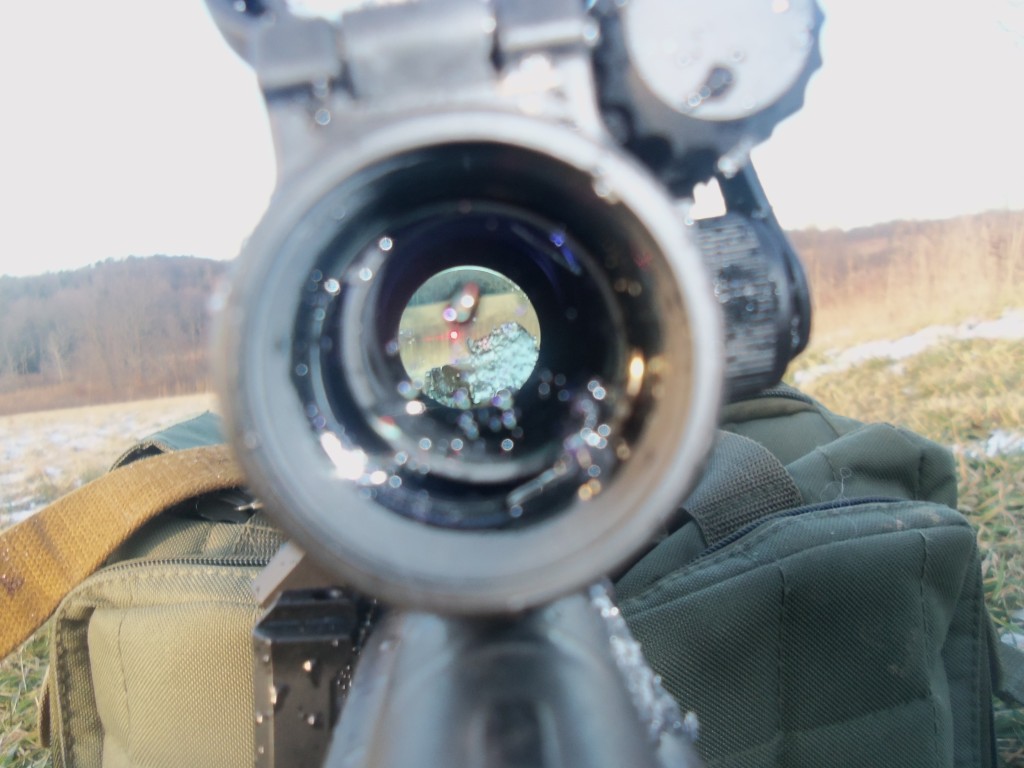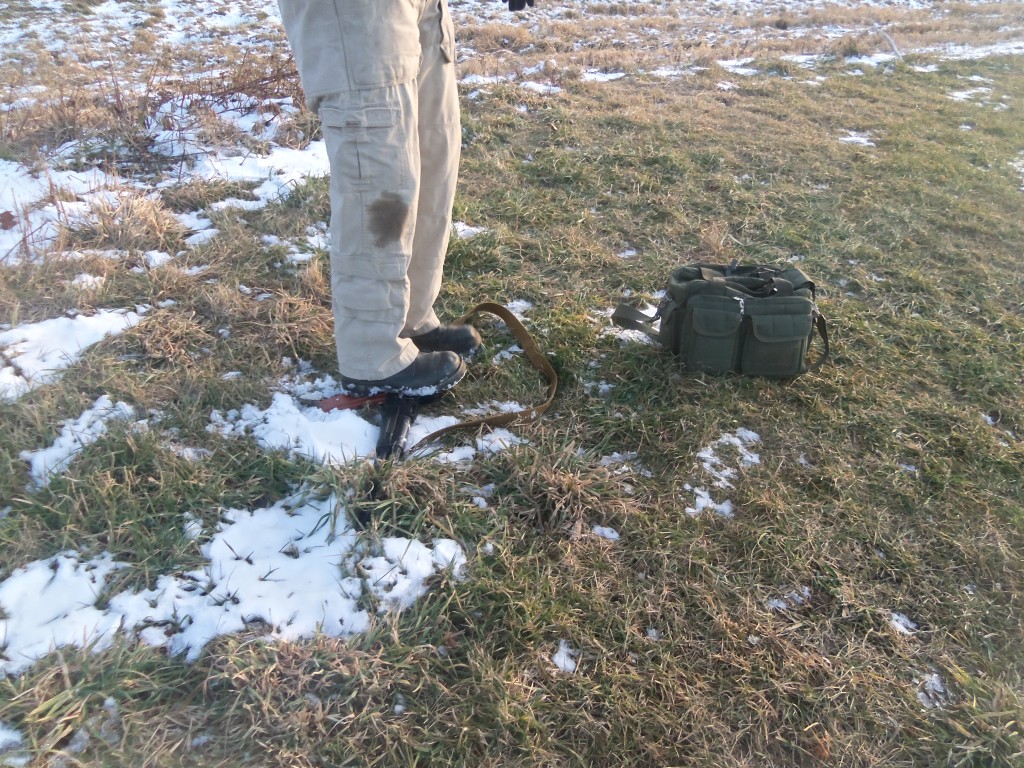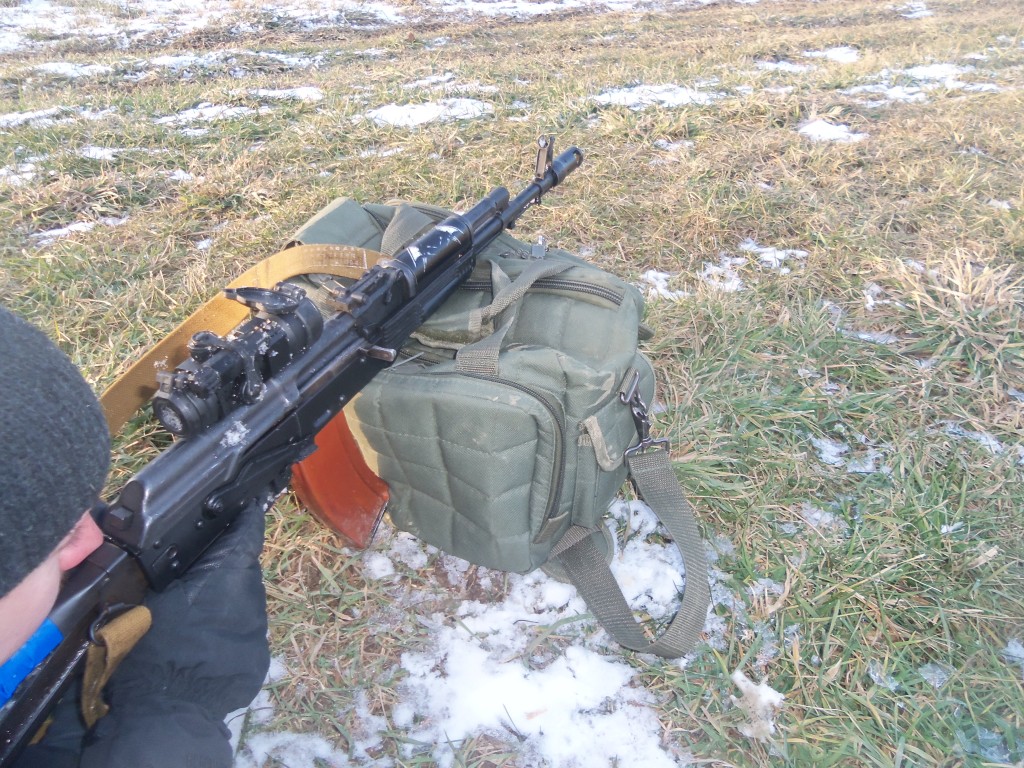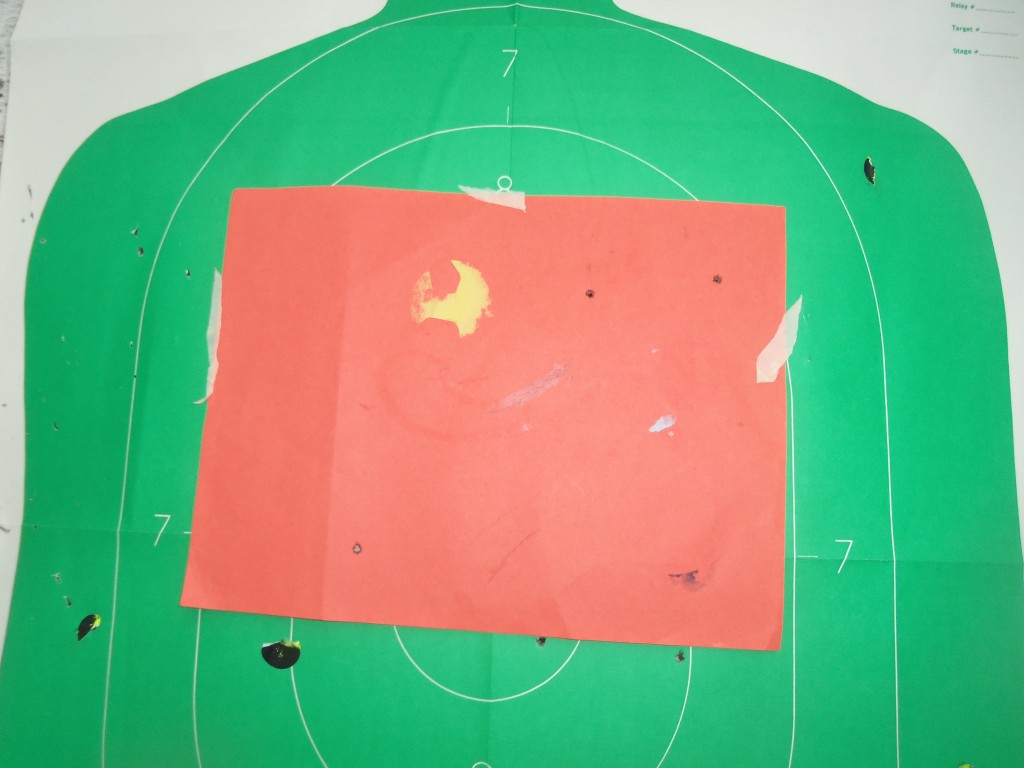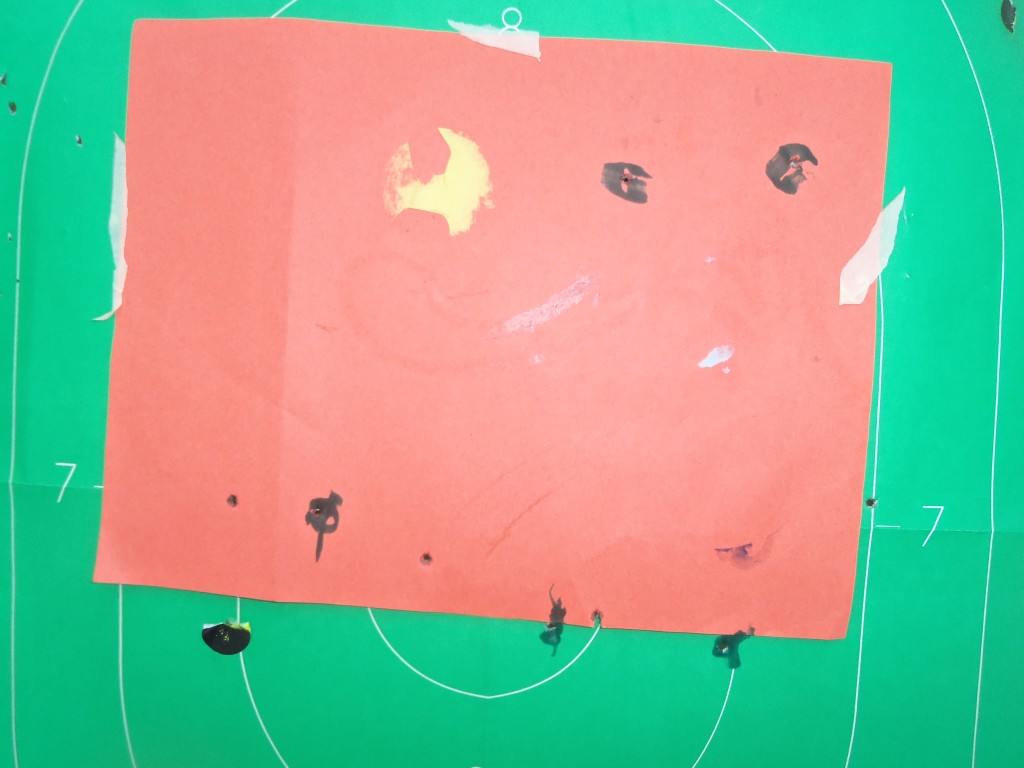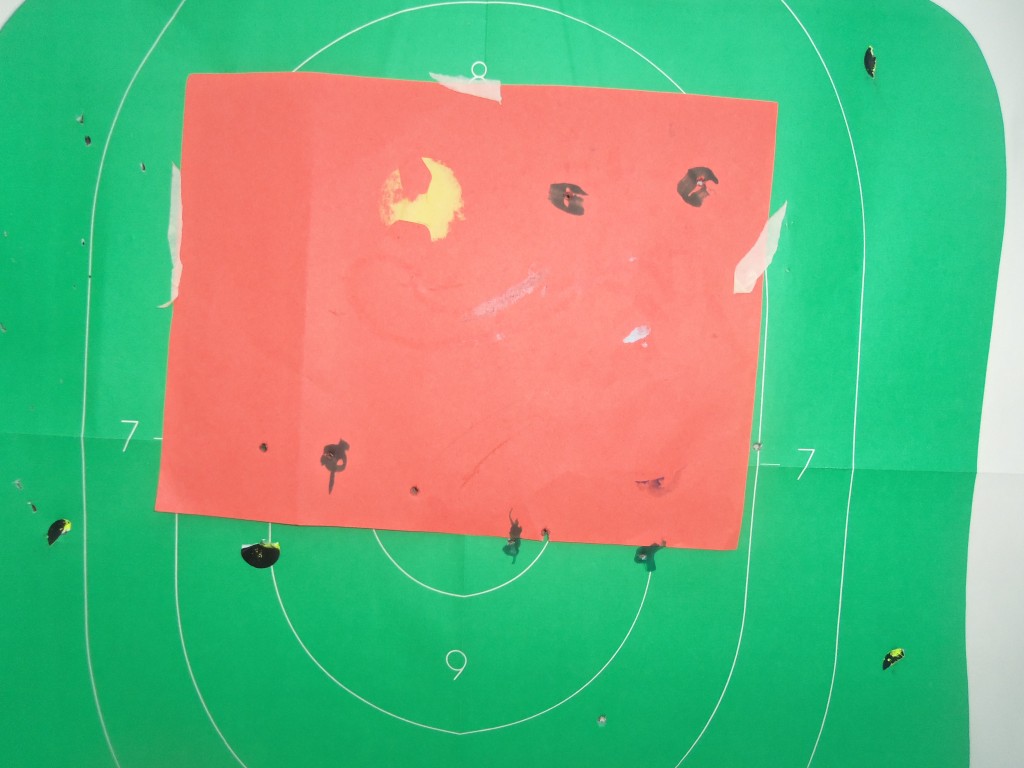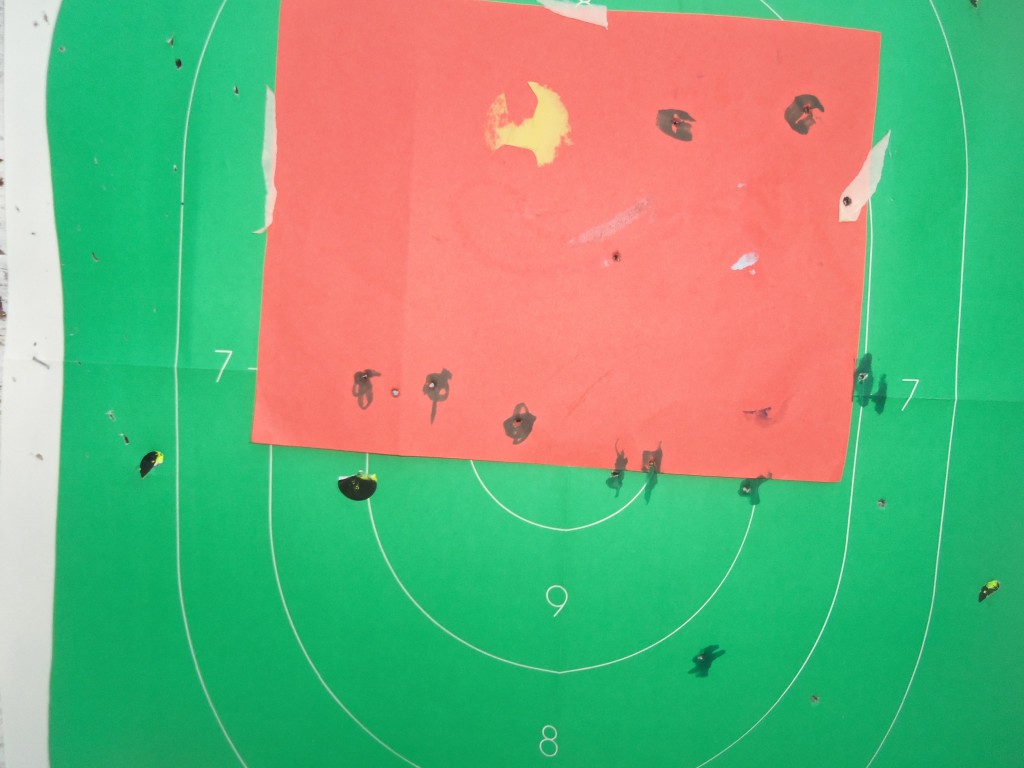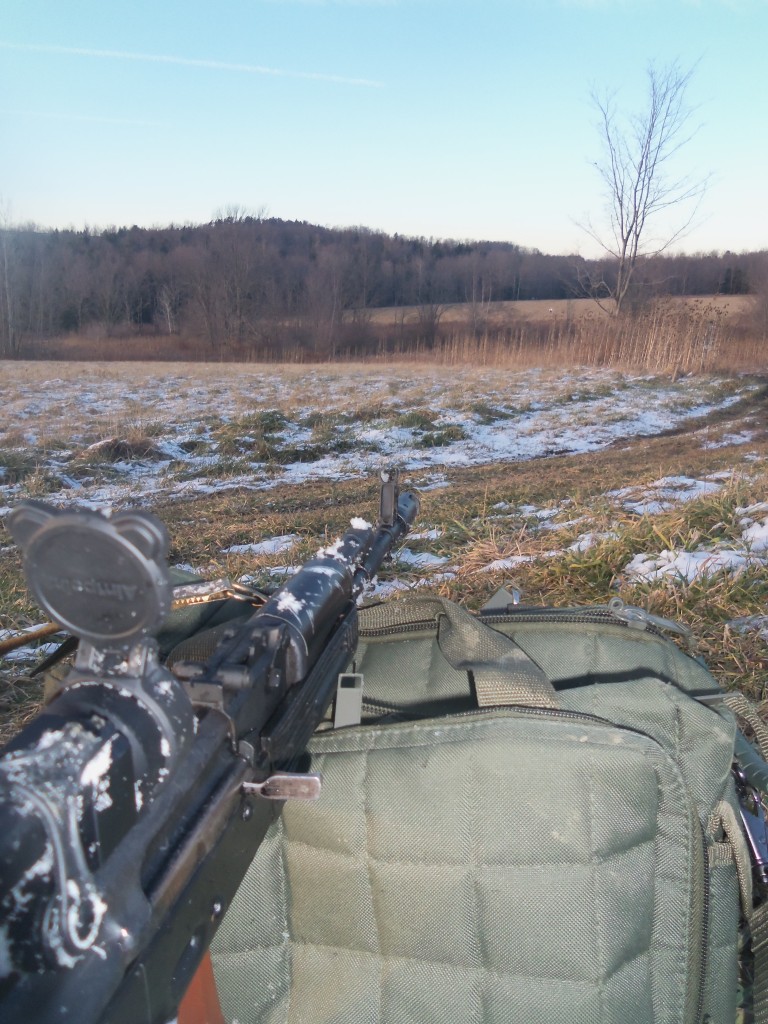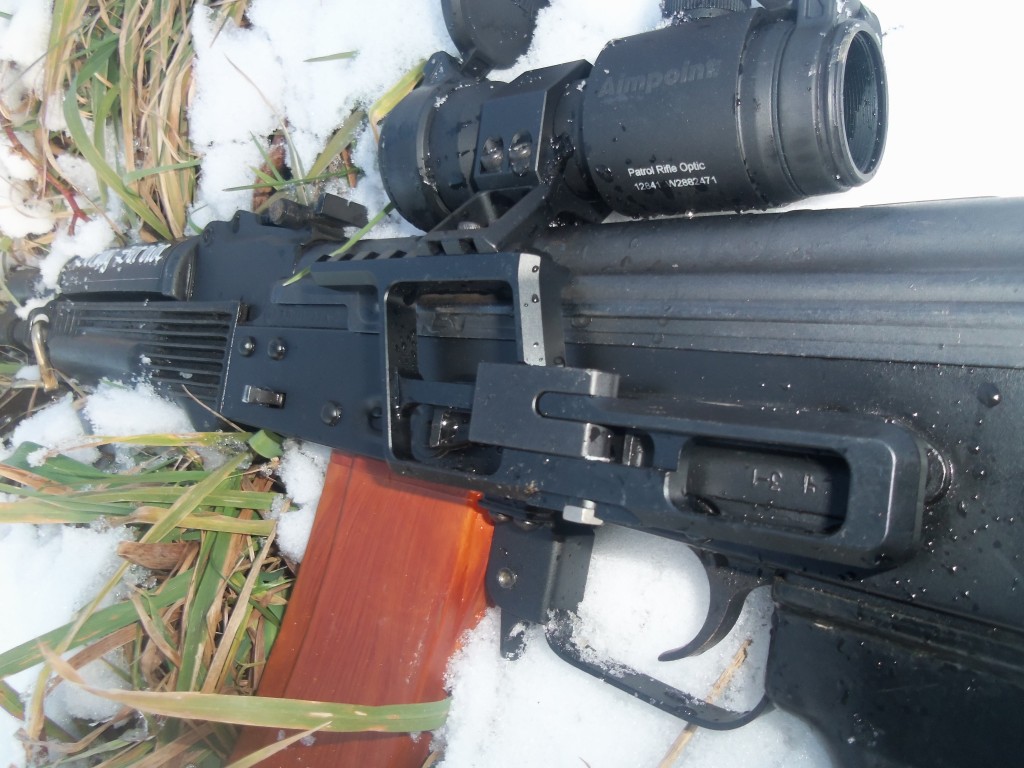TX-Zen:
I have come to really really like the RS Regulate modular system and am particularly impressed with the extreme low weight and versatility of the design, and how many combinations of optics can be mounted. I'll let Voron's review speak for itself but did want to say that I think this is the best US made mount and one that is very much lighter than the excellent NPZ or Alpha rails. With lower weight and higher availability I think the RS Regulate is a fantastic rail system. RS uses the castle nut style of clamp, more details are here
Update: As the years have rolled by I am happy to say that I think RS Regulate is the best US mount on the market - bar none. I have 4 or 5 mounts now for various optics including the Trijicon TA31 and the Browe BTO, and have been very satisfied with them over the years. There are other decent US mounts but there is no question in my mind that in the US, RS is the best by far.
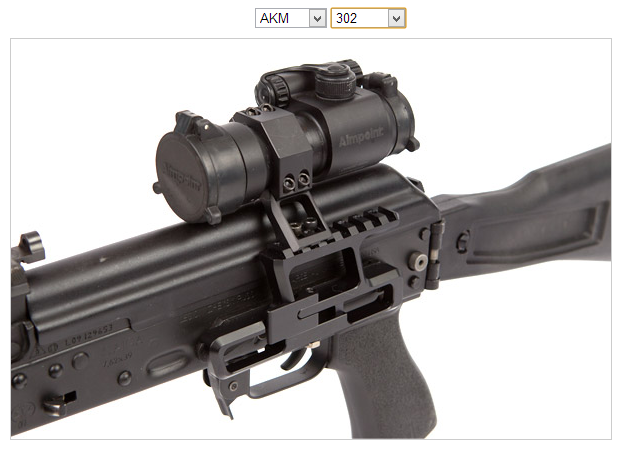
BTO and ACOG TA31GH
Voron:
The Kalashnikov platform has seen rather a substantial overhaul of its ability to successfully mount and attach red dots, collimator sights and other optics. The original design that allowed the AK series of rifles to accept optics was developed nearly 70 years ago by the Russian engineers in Soviet Russia. During the process of the projectile exiting the barrel of an AK-type weapon, the avtomat exhibits much flex, starting at the anterior end of the receiver and ending at the end of the barrel. If anyone reading this has never seen AK fired in slow motion, consider visiting your favorite Internet video site to watch this in action. Yes, the AK does exhibit vertical flex that puts a substantial amount stress on the barrel and its components. When the developers were looking for a solution to properly scope their rifles, they decided that one of the only places on the avtomat that did not exhibit substantial amount of vertical as well as lateral flex were the two lateral sides of receiver. Does the receiver flex? Well sure it does....but not enough to make a difference for a scope mount. This is one of the reasons why the stamped receiver was chosen over the milled receivers back in the late 50s. It was economical, steel extrusion was finally perfected and tooling was set up to mass produce a receiver that would survive high pressure as well as stress from the detonation of the round and the projectile traveling through the barrel. After all, its the receiver's ability to slightly flex that gives it a long working life and earns a reputation as a dependable weapon that is possibly the best assault rifle in the world. I have read numerous times in US magazines and blogs that the "original" milled receiver is what makes the rifle more accurate and dependable when compared to the cheap stamped one. This is simply not true. One might ask- why the hell is the author trying to convince me of this phenomenon? I thought this was supposed to be an article on the new RS Regulate scope mount? The reason will come in the next few paragraphs when you will see what flexing allows to do to a piece of properly machined 6061 T-6 billet aluminum.
So lets get back to the mounting solutions that were brought to life in the USA. We have seen gas tube replacements, dust cover replacements as well as mounts that attach to front trunnion of the AK. These gadgets are equipped with a Picatinny rail that enables shooters to attach optics of their choice onto the avtomat. Personally, I never understood why anyone would replace the gas tube of the AK with an aftermarket gas tube that has a Picatinny rail for optics. First, the gas tube gets very hot, and second, you have to take the gas tube apart to properly clean the rifle.Will it keep zero after re-attachment? Perhaps. On top of that, the optic sits nearly 16 inches in front of the shooters eye. Keep in mind, this a just my perspective. When I look though an optic, I like it to sit as close to my eye as possible to eliminate parallax and have proper eye relief. I also understand that some of these elements are absent when in use with a red dot, but I never found it comfortable anyhow. I have little experience with dust cover replacements with Picatinny rails for mounting solutions outside Russian factory Izhmash or Molot AK series of shotguns. Once again, I am not crazy about replacing a factory part with a newer aftermarket piece that has not undergone military testing or been proven through decades of battle use.
here is an quick example of various side-rail attachments
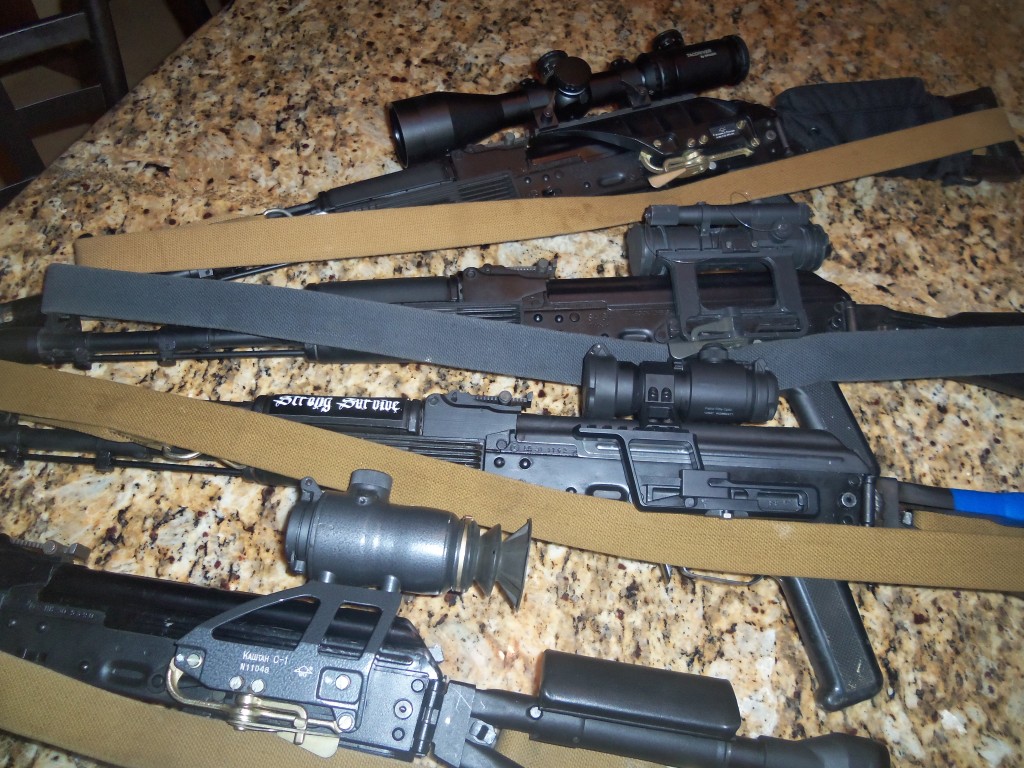
Examples of low-profile red-dot mountsPK01-V, Belomo 1x Factory integrated side-rail red dot (top)
RS Regulate 300 series side mount with Aimpoint (bottom)
So what other
options do we have? Like many of you I have read about
the horrors of the side rails that were attached to
the left side of the receiver by the Russians (and
other countries of AK manufacture). Drunk Ivan
installed it crooked, sideways and too high, so it was
out of spec. I can’t even get this cheap commercial
MTK-83 mount on it. Oh... and the cheek weld is poor.
Relax, there is always a solution. Russians have been
using side mounts for a very long time. From AKs to
SVDs to Romanian manufactured PSLs; side rails have
proven themselves to be reliable, robust and holding
zero when properly adjusted to the scope mount's base.
The quick detach allows the shooter to remove the
optic within a matter of seconds and switch to iron
sights in case the lenses were broken or scope was
toast. Currently on the US market there are a few
different side mounts that allow you to mount a scope
onto your rifle. Some are worth your time, others are
not. This is where its gets a little difficult for an
ordinary US shooter to have to make a decision on
getting a proper mount. There simply isn't a lot of
information on this subject that is easily obtainable
outside Internet forums or other firearm-related
blogs. Even there, the information may or may not be
correct, so I can see why so many people chose to go
the other route to solve their scope mounting
solution. The purpose of this write-up is not to get
the reader familiarized with many different examples
of quality side mounts, but rather concentrate on a
new design, that was inspired by standard Russian
ideology, but perfected and tailored to the US market.
For those eager to learn more about evolution of
Russian side mounts I suggest you visit my good friend
TX-Zen's website https://russianoptics.net/ or Doug
Fords http://www.avtomats-in-action.com/index.html
There you will find more in-depth info on Russian
methodology of scoping the AK.
I have been using standard Russian side mounts for
many years. These are very high quaility mounts that
are cast from a metal alloy and then pinned and
screwed to a solid metal base. Each country of origin
may have a slight variation in size and style of the
side rail; that is why it is so critical to properly
adjust scope base to YOUR side rail. In this article
we will focus on a new product by a company called "RS
Regulate." The company isn't new to the side mount
game; after all, it was this company which first
successfully adopted a side mount to a series of
Swedish-made Aimpoints as well as US-made ACOGs using
a proprietary clamp. These had a Belomo style lower
clamping mechanism with a custom top piece that
allowed shooter to mount the optic low above the dust
cover for proper cheek weld. The side mount sits at
the center of mass with respect to the rifle, so the
additional weight is evenly distributed and does not
affect the balance of the rifle. These first
generation RS Regulate mounts were quite successful,
as they allowed US shooters to easily mount favorite
optics they were already used to.
The mounts were good, but the company decided that
there is always room for improvement and was able to
come up with a better intergrated system that was a
bit refined, more modular and more robust. The new
design had a better locking mechanism that allows the
shooter to secure the mount to the AK's side rail. We
already discussed that depending on the factory that
produced your particular AK, side rail dimensions may
vary. The new RS Regulate design is vaguely
reminiscent of the SVD locking mechanism, where the
castle screw is pulled up to allow loosen or tighten
the bracket. Once you have the mount attached to the
your siderail, you simply unlock the tab, adjust the
screw and secure it in position.The new design of the
lockup mechanism is solid and easy to understand and
use.
RS Regulate 300 series side rail with Aimpoint
attached. Adjustment made easy.
 The new RS-AK 300 modular system
adds the capability to change upper optic mounts as
needed and to position optics not only directly
over-bore, but front-to-back. When I first saw the new
design, I was a bit concerned about the structural
integrity of the superior (top) piece of the mount. I
thought, what if the scope itself was bumped from the
right to left side by a unforeseen or sudden force?
The only thing that is holding it to the lower piece
of the rail system are the two screws. What about the
two rails that connect to the top round clamp which
secures the actual scope via four screws? Will they be
able to withstand the pressure that could potentially
crack them and snap off? These were the questions that
Scot Hoskisson, the man behind RS Regulate LLC and I
were addressing via email. After hearing my concerns
regarding the design he sent me the new prototype for
a classic Russian field test abuse.
The new RS-AK 300 modular system
adds the capability to change upper optic mounts as
needed and to position optics not only directly
over-bore, but front-to-back. When I first saw the new
design, I was a bit concerned about the structural
integrity of the superior (top) piece of the mount. I
thought, what if the scope itself was bumped from the
right to left side by a unforeseen or sudden force?
The only thing that is holding it to the lower piece
of the rail system are the two screws. What about the
two rails that connect to the top round clamp which
secures the actual scope via four screws? Will they be
able to withstand the pressure that could potentially
crack them and snap off? These were the questions that
Scot Hoskisson, the man behind RS Regulate LLC and I
were addressing via email. After hearing my concerns
regarding the design he sent me the new prototype for
a classic Russian field test abuse.
here is an example of NPZ made 1P78 scope with 3 rigid
support bars
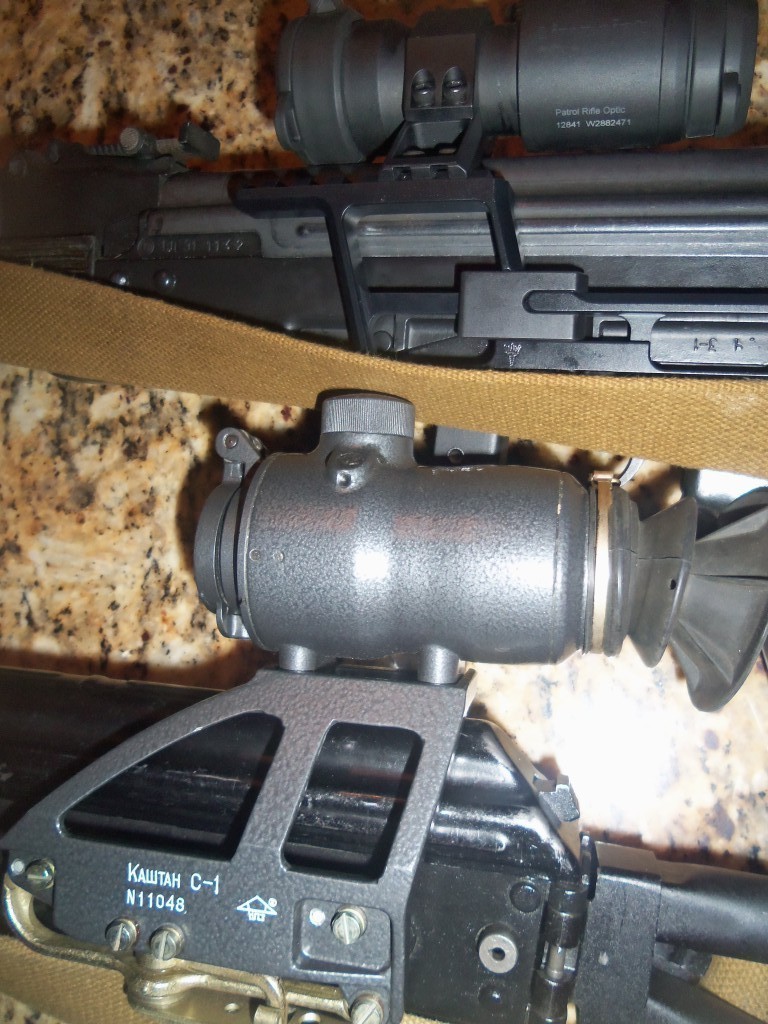
here is another example of a NPZ side-mount with
additional ribs to make strong and rigid
300 series RS Regulate system
can be adjusted not only ant-to-post (anerior to
posterior) on the Picatinny rail, but left to right as
well.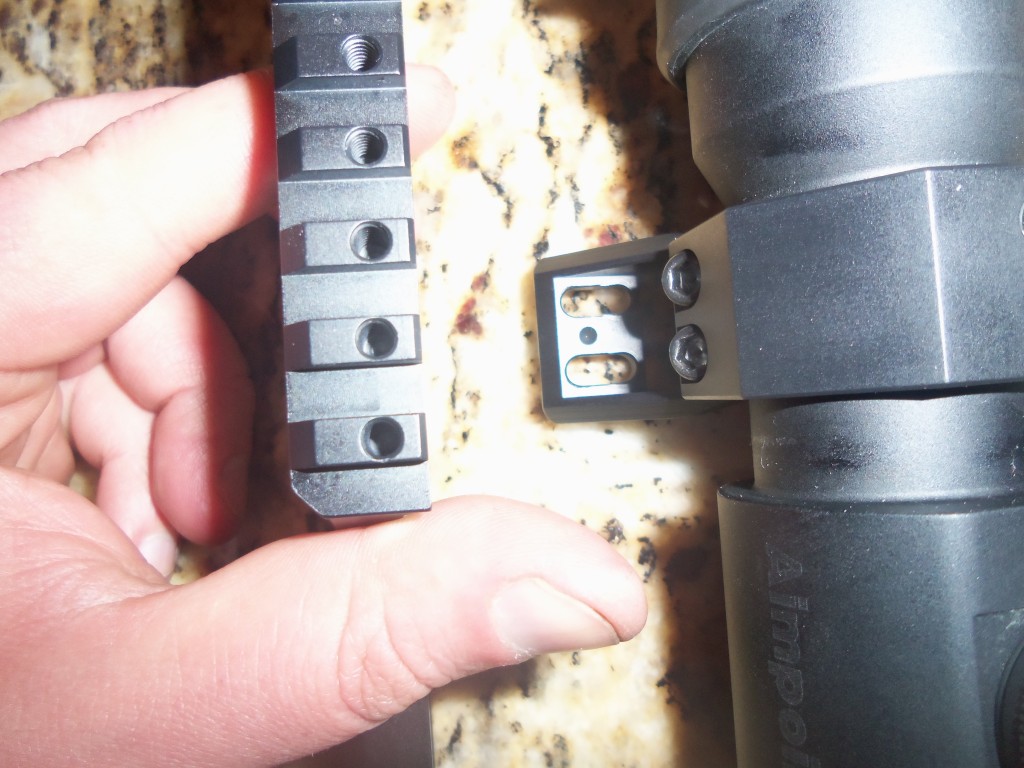
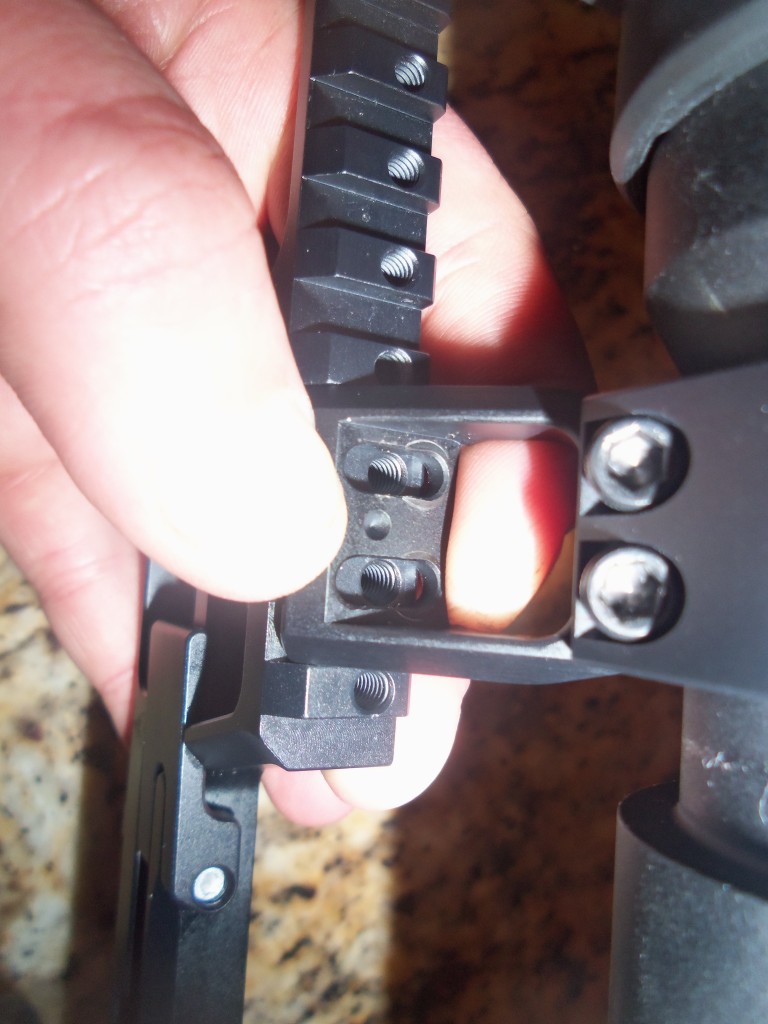
Following simple guidelines of the scientific method,
I decided to put the mount through a series of tests
that would determine whether it would survive the
harsh conditions of low temperature and heavy stress.
Early January in North East Pennsylvania typically
exhibits mild temperatures lingering around -10
degrees Celsius with little snow. We setup our initial
target at 100 meters and established a proper zero
using a 1x Aimpoint red dot that I received with the
mount. After this, I made the necessary adjustments
for the bullet drop at 300 meters for the 53 grain 7N6
out of 16 inch AK-74s using the provided Aimpoint red
dot. My target consisted of a standard silhouette with
an orange 8x11 piece of paper stapled to the center of
mass. A five shot group was established and recorded.
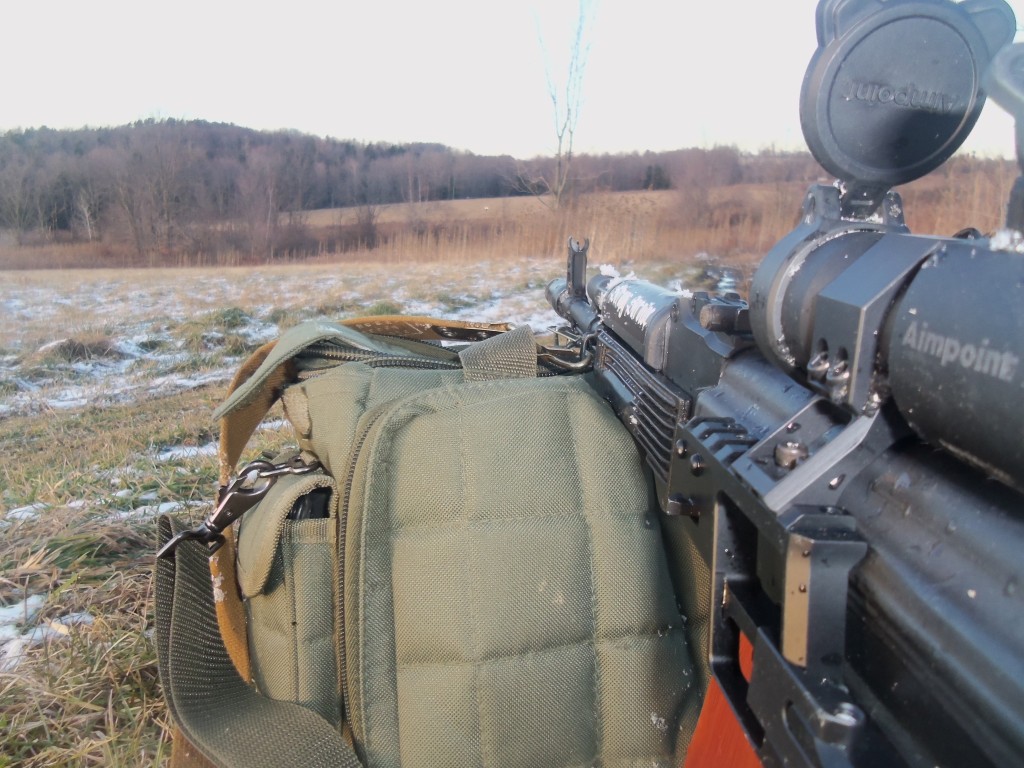
First things first: a simple
drop test that would land the rifle directly on the
optic, exerting stress vertically on the mount. It
took about six times for the rifle to finally land
directly on the optic to yield desired outcome. The
field was frozen solid, so instead of some of the
force being absorbed by the ground it was redirected
straight back to the mount itself.
I then proceeded to do ten
standard pushups on the scope ,once again directing
the applied force directly onto the mount. Right
before going through with the following exercise I
thought for sure that the two arms on the mount would
snap, or the screws would go out first. Wrong. Flexing
is what kept this mount alive and solid; the exact
flexing of the stamped receiver is what keeps it going
strong after thousands and thousands of rounds on
select fire.
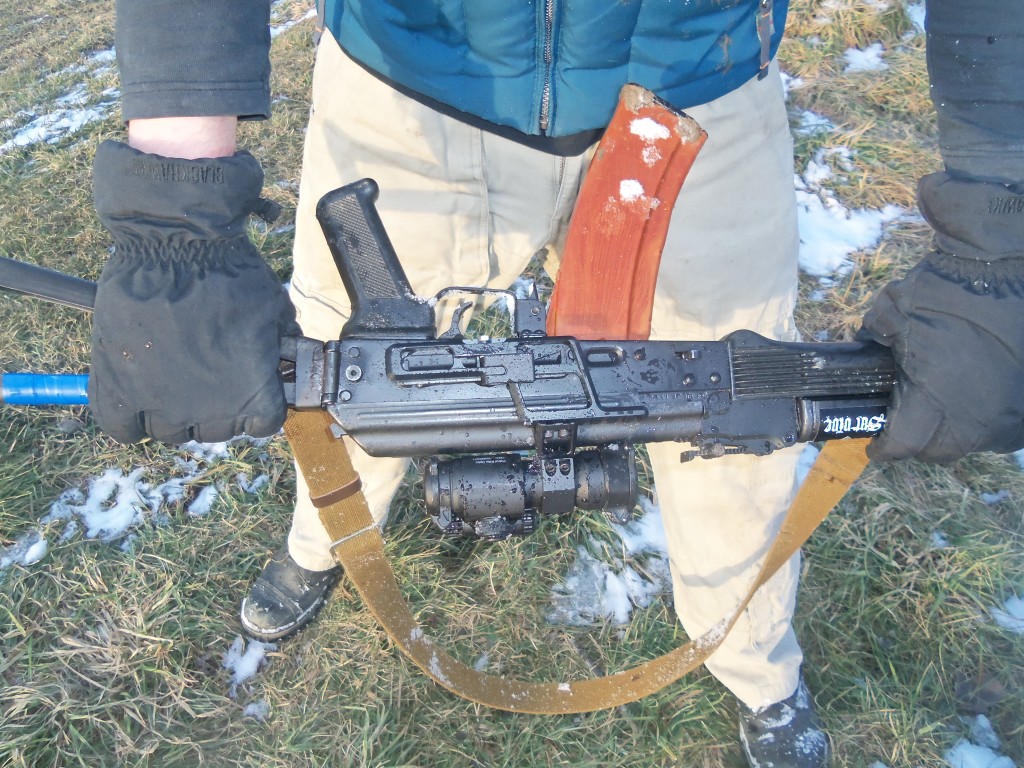
The mount has survived test #1,
but did it retain zero? We went back the 300 meter
mark and fired another 5 shot group to see the
aftermath. I have recorded and marked the first 5
shots and compared the 5 after the test. Please keep
in mind, this was not any kind of bench-rest shooting
under comfortable conditions, but rather practical
approach in low temperatures and strong winter wind.
Very surprisingly, the scope mount retained zero. My 5
shot group was in line with the previous 5-fired
rounds and impacted directly in the center of mass of
the silhouette.
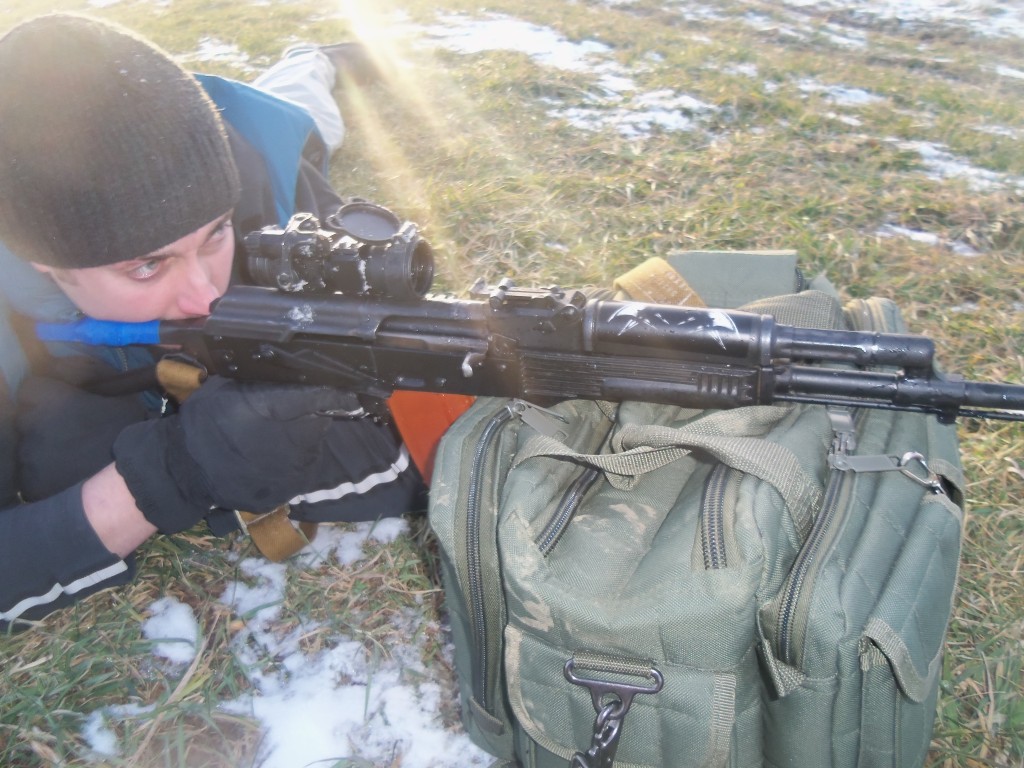
The next test was to simulate a sudden "bump" or a
"hit" from left to right side of the mount. With my
right foot on the magazine and the left foot on the
optic I pivoted my body back and fourth to see how
much pressure the mount can absorb. Once again, I was
wrong about the original design. The mount endured,
holding up a 6'1” 175 pound man. After the final test
we wanted to check the zero at 300 meters to see if
the previous exerted force would cause the shift in
the scopes' POI. Another 5 shot group was fired and
compared to the last string. Both scope and scope
mount retained their zero under these extreme
conditions.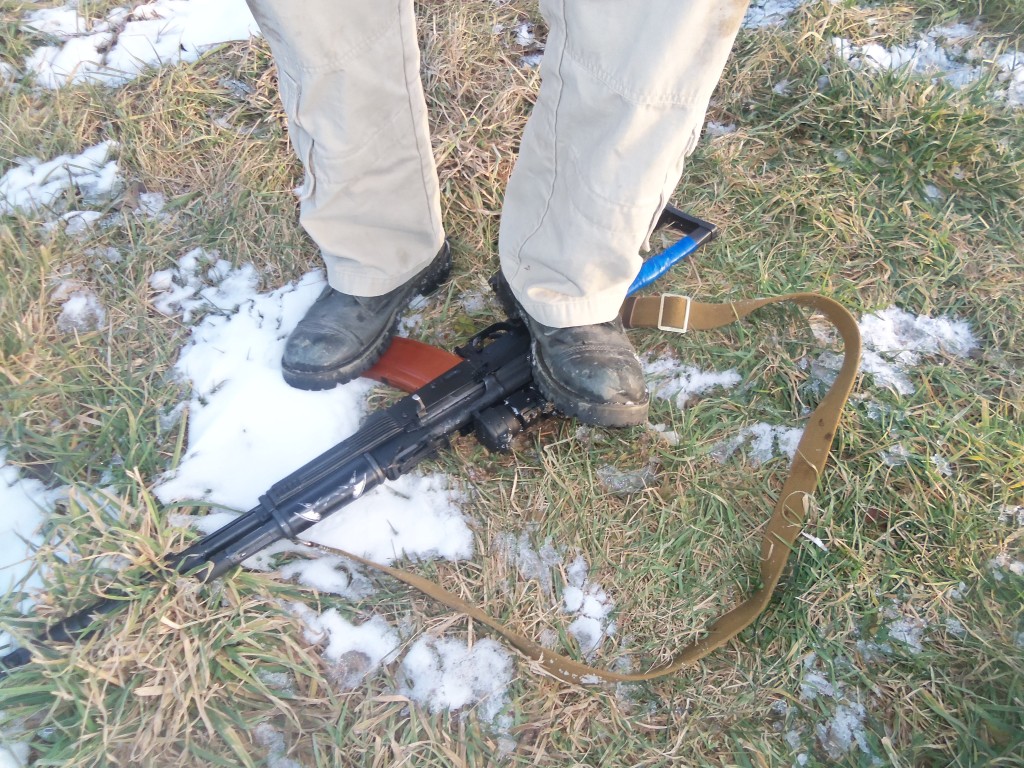
and here are the pictures of the
target. As you can see, the first cotrolled group #1
then I marked these shots and
did second controlled group
and final controlled group #3 overall look
I rarely add/replace factory parts on any of my AKs. I tend not to slap all kinds of unnecessary gizmos that only add weight and make the avtomat bulkier and more difficult wield. This particular accessory will be added to one of my rifles in the near future. For those who seek a simple and reliable solution that will allow to succesfully scope your AK without compromising its reliability I strongly suggest you look for these new side mounts from RS Regulate and give them a chance.
January 2012
The older, original series 30mm tube optic mount that started it all:


